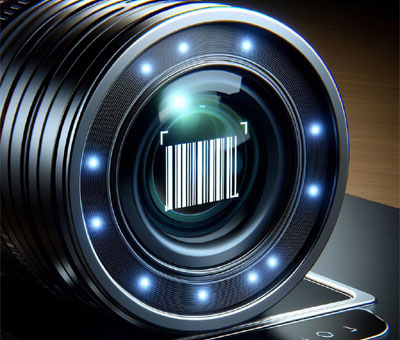How to Decode Barcodes from Video Streams
Decoding barcodes from a video stream is a fascinating process that combines the power of computer vision and real-time data processing. In the digital age, barcodes are ubiquitous, providing a quick means to encode information in a format that machines can read easily. With the advent of video streaming technology, it’s now possible to decode barcodes in real-time, opening up a plethora of applications in retail, logistics, and inventory management. This article will guide you through the process of decoding barcodes from video streams using modern programming techniques.
In the digital age, barcodes are ubiquitous, providing a quick means to encode information in a format that machines can read easily. With the advent of video streaming technology, it’s now possible to decode barcodes in real-time, opening up a plethora of applications in retail, logistics, and inventory management. This article will guide you through the process of decoding barcodes from video streams using modern programming techniques.
Understanding the Basics
Before diving into the technicalities, it’s essential to understand what a barcode is and how it works. A barcode is a method of representing data in a visual, machine-readable form. Initially, barcodes represented data by varying the widths and spacings of parallel lines, but today, they can also be 2D codes like QRCodes, DataMatrix, PDF417, AztecCode, etc.Setting Up the Environment
To decode a barcode from a video stream, you’ll need a programming environment capable of handling video processing and barcode recognition. Python with OpenCV is a popular choice due to its extensive libraries and ease of use. For web applications, you can use our JavaScript DataSymbol Barcode Scanner Web SDK library.Step-by-Step Guide
Step 1: Capture Video Stream
The first step is to capture the video stream. If you’re using Python, you can access the webcam feed using OpenCV. For web applications, HTML5 provides access to the camera on a user’s device.Step 2: Frame Extraction
Once you have access to the video stream, the next step is to extract frames from the video. This is because barcode detection algorithms typically operate on still images.Step 3: Barcode Detection
With the frames extracted, you can now apply barcode detection algorithms. You can use our Barcode Reader library. For JavaScript, the Web Barcode Reader SDK provides APIs to detect and decode barcodes from video streams.Step 4: Decoding the Barcode
After detecting the barcode, the final step is to decode it. The decoding process converts the visual information into a string of text that represents the data encoded in the barcode.Real-World Application
Imagine a scenario where you need to quickly scan a large number of items using barcodes. Instead of using a handheld scanner, you could set up a system that uses a camera to stream video to a computer, which then decodes the barcodes in real-time. This could significantly speed up the process and reduce human error.Challenges and Considerations
While decoding barcodes from video streams is powerful, it comes with its own set of challenges. Lighting conditions, barcode orientation, and camera quality can all affect the accuracy of barcode detection. It’s crucial to test the system under different conditions to ensure reliability.Real-time barcode decoding from video streams is a testament to the advancements in computer vision technology. By following the steps outlined in this article, you can set up your own barcode decoding system, streamline operations, and embrace the future of automated data processing.
